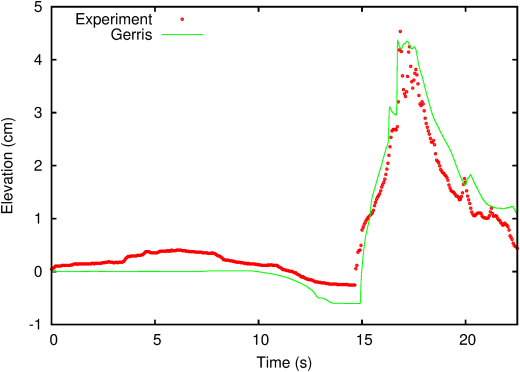


5.4 Tsunami runup onto a complex three-dimensional beach
-
Author
- Stéphane Popinet
- Command
- sh monai.sh
- Version
- 110107
- Required files
- monai.gfs (view) (download)
monai.sh 3D.gfv leveque.gfv mesh.gfv overhead.gfv probe.gfv
- Running time
- 50 minutes
This example is a classical validation test case for tsunami
models. It was proposed at the "Third
international workshop on long-wave runup
models". It
is based on experimental data obtained in a wave tank in order to
understand the extreme runups observed near the village of Monai
during the 1993 Okushiri tsunami.
The animation in Figure 42 gives a general idea of the
geometry and time evolution of the modelled tsunami. The bathymetry
data and channel geometry matches that used in the experimental wave
tank. The water surface is forced on the open boundary with the
experimentally-imposed waveform (outside the field of view on the
right-hand-side in the animation). The initial dryout as well as
extreme runup in the narrow central valley are clearly visible in
the animation, as well as wave reflections from the boundaries and
dimples in the water surface caused by underwater vortices.
| Figure 42: Animation of the water surface (light blue)
and bathymetry (white) for the Monai tsunami. |
Another view of the process together with the adaptive mesh used to
resolve the flow is given in Figure 43. This figure can
be compared with that of LeVeque and George (Figure 4 of
[7]).
| Figure 43: Evolution of the free surface elevation
(left column) and corresponding adaptive mesh (right
column). Contour lines of the topography are represented. The areas
in white in the left column are dry. The wet areas are coloured
according to free surface elevation relative to the unperturbed
water surface. A “jet” colour scale is used with a maximum value
(dark red) of +5 cm and a minimum value (dark blue) of −5 cm. |
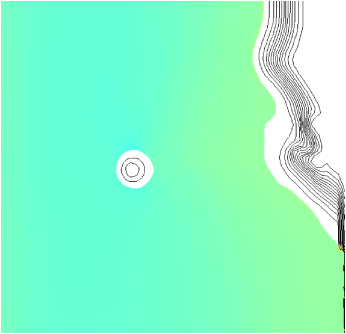 | 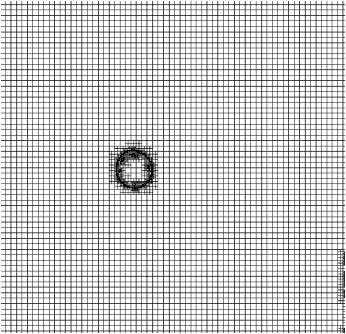 |
| t = 10 s |
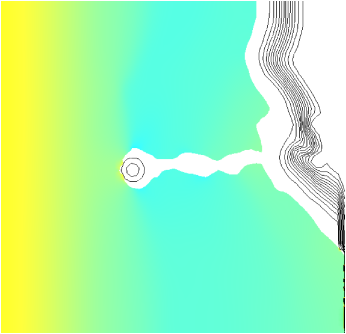 | 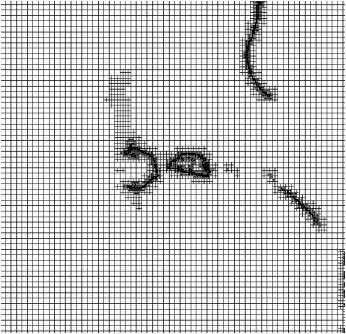 |
| t = 12 s |
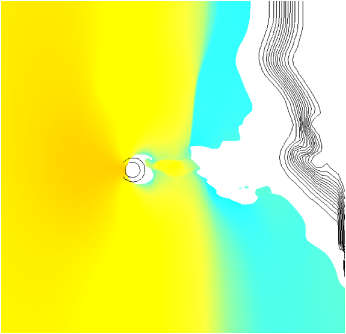 | 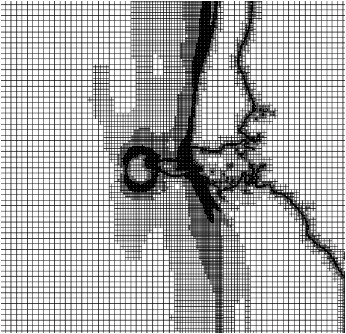 |
| t = 14 s |
 | 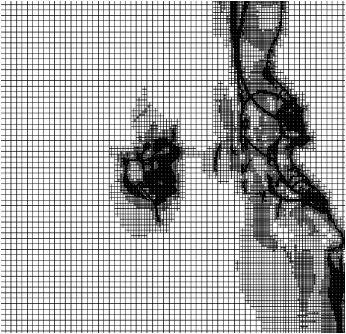 |
| t = 16 s |
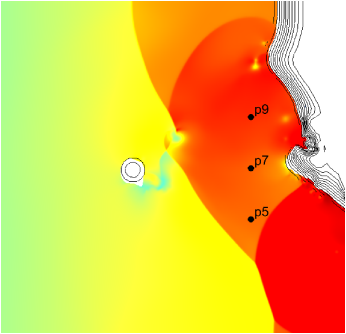 | 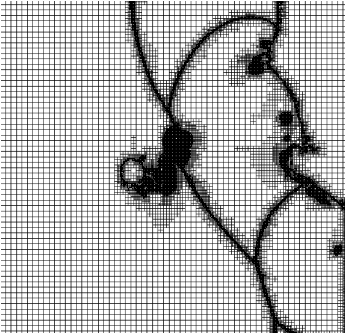 |
| t = 18 s |
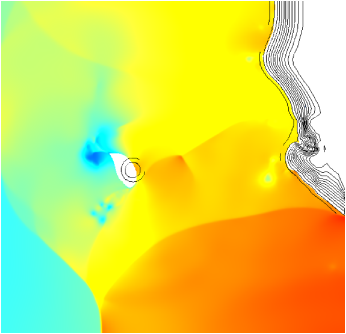 | 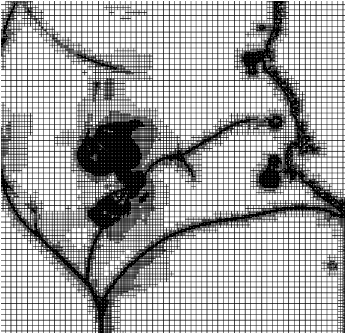 |
| t = 20 s |
Experimental data includes free-surface elevation timeseries at
several locations (see Figure 43, t = 18 s). Figures
44, 45 and 46 give comparisons of the experimental
and numerical timeseries.
| Figure 44: Time-series of free-surface elevation measured
and calculated at the location of probe 5. |
| Figure 45: Time-series of free-surface elevation measured
and calculated at the location of probe 7. |
| Figure 46: Time-series of free-surface elevation measured
and calculated at the location of probe 9. |
Finally, the animation in Figure 47 gives a comparison
between the overhead video of the experiment and the corresponding
view of the simulation.
| Figure 47: Comparison between the video of the
experiment (left) and the simulation results (right). |
More details on this simulation and the method used is given in
[9].








